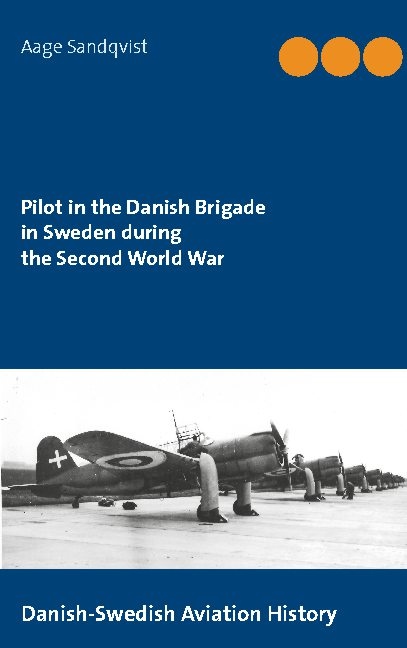
Pilot in the Danish Brigade in Sweden during the Second World War
Kategorier: Andra världskriget Biografi: allmänt Biografi: historia, politik och försvar Biografier och litteraturvetenskap Biografier, sanna berättelser, essäer etc. Flygstridskrafter och flygstridföring Historia Historia och arkeologi Krig och försvar Militära krafter och sektorer Militärhistoria Samhälle och samhällsvetenskap Särskilda krig och fälttåg
Pilot in the Danish Brigade in Sweden during the Second World War
Kategorier: Andra världskriget Biografi: allmänt Biografi: historia, politik och försvar Biografier och litteraturvetenskap Biografier, sanna berättelser, essäer etc. Flygstridskrafter och flygstridföring Historia Historia och arkeologi Krig och försvar Militära krafter och sektorer Militärhistoria Samhälle och samhällsvetenskap Särskilda krig och fälttåg
Among these Danish refugees, were slightly more than a dozen Danish pilots, who were secretly placed in pairs on different Swedish airbases. They eventually gained access to Sweden's foremost military aircraft, namely the Saab B17 dive-bomber. In the last days of the war, these pilots gathered at the F7 Såtenäs airbase on the shores of Lake Vänern, where they formed the Danish Brigade's Air Unit. Its main purpose was to support the Danish Brigade's return to Denmark. One of these pilots was the author's father, Lieutenant Carlo Hjalmar Sandqvist. Carlo is the "Pilot in the Danish Brigade in Sweden during the Second World War."
This book presents inside views of the Danish resistance movement and German concentration camps in Denmark during World War II, and a dramatic escape. It describes the Danish Brigade in Sweden - a secret organization in which Sweden trained up to 5,000 Danish refugees as "police troops", eventually a paramilitary organization. It also presents the secret Swedish military plan for "Saving Denmark" in the last year of the war.




